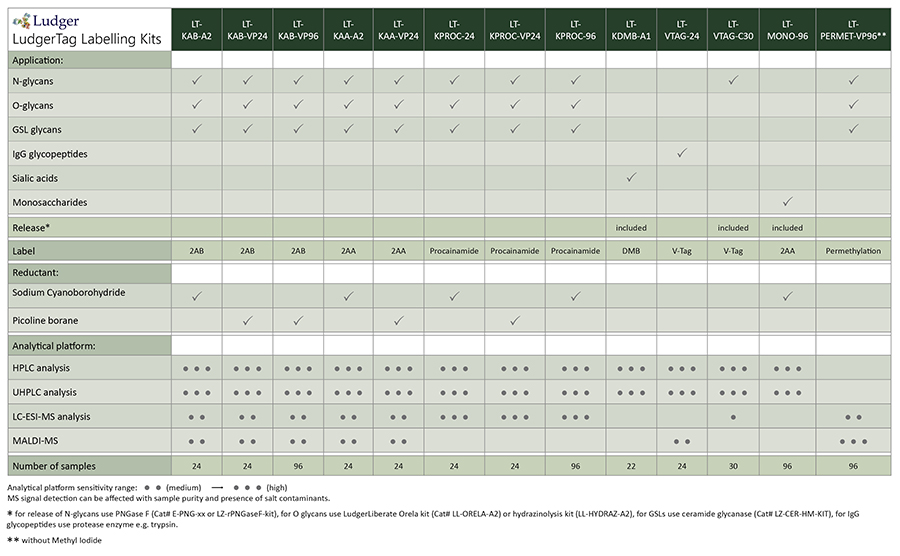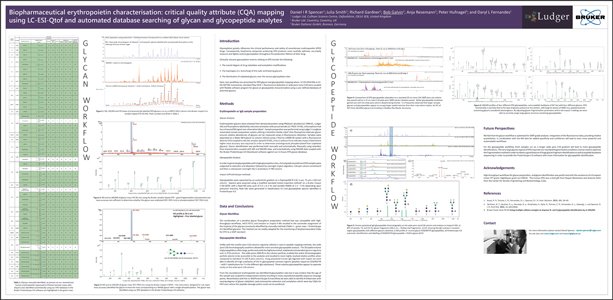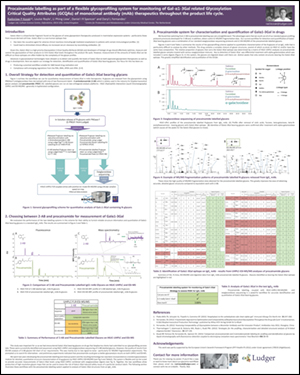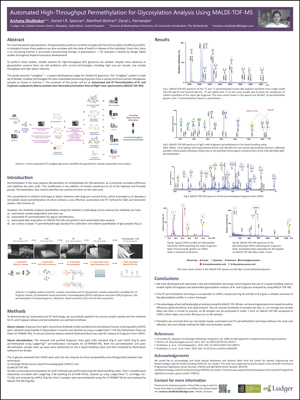
Ludger Mass Spectrometry
Mass Spectrometry (MS) is an important tool for the structural characterization of carbohydrates. MS involves production of ions and their detection according to mass-to-charge (m/z) ratios. Given a molecule's m/z value and its charge state, its mass can be calculated, but to perform MS the molecule first must be vaporized and ionized. Two of the most popular ionization techniques for the analysis of carbohydrates are ESI (electrospray ionization) and MALDI (matrix-assisted laser-desorption ionization). These are 'soft ionization' techniques, which are suited to carbohydrate analysis since there is very little fragmentation. ESI is also compatible with liquid chromatographic (LC) separations (from ultra-fast UPLC to low-flow nanoLC), a technique which is also known as LC-MS or LC-ESI-MS.
Ludger offers glycan analysis technology compatible with the following MS techniques:
LC-ESI-MS

In ESI-MS ionization is achieved by an electrospray in which a high voltage is applied to a liquid to create an aerosol. ESI may produce multiple charged ions, effectively extending the mass range of the analyser to accommodate the kDa-MDa orders of magnitude observed in proteins and their associated polypeptide fragments.
LC-ESI-MS combines the physical separation capabilities of liquid chromatography (or HPLC) with the mass analysis capabilities of mass spectrometry (MS). The analysis can be performed online, by feeding the liquid eluting from the LC column directly to an electrospray, or offline, by collecting fractions to be later analyzed in a classical nanoelectrospray-mass spectrometry setup.
At Ludger we label glycans with procainamide prior to analysing with LC-ESI-MS. Because of its improved ionisation efficiency compared to 2AB labeling procainamide can permit identification of minor glycans (<1% relative peak area) by LC-ESI-MS.
MALDI-MS

For MALDI-MS, a sample is mixed with a UV-absorbing crystalline matrix material, such as 2,5-dihydroxybenzoic acid and alpha-cyano-4-hydroxycinnamic acid, and spotted onto a metal target plate. The plate is then inserted into the MS instrument, where it is placed in a vacuum and hit with a UV laser. The matrix absorbs the irradiation, heating and volatilizing the sample and ionizing it at the same time.
The type of a mass spectrometer most widely used with MALDI is the TOF (time-of-flight mass spectrometer), mainly due to its large mass range. Here, charged ions of various sizes are generated on the sample slide. In the instrument, the time of ion flight differs according to the mass-to-charge ratio (m/z) value of the ion.
When characterising glycans, exoglycosidases are used to cleave one monosaccharide unit at a time from the nonreducing end of the carbohydrate chain. This is frequently employed in conjunction with MALDI-MS profiling of glycoforms, to facilitate assignment of the terminal monosaccharides and linkages
At Ludger we permethylate glycans prior to MALDI-TOF-MS analysis. Permethylation is the most popular derivatization of carbohydrates for MS detection, as it enhances ionization efficiency and stabilizes the sialic acids. This modification is the addition of methyl substituent to all of the hydroxyl and N-acetylgroups. Permethylation also methyl esterifies the carboxy function on the sialic acid.



